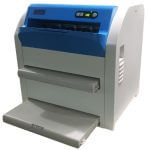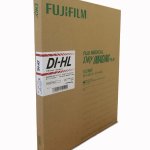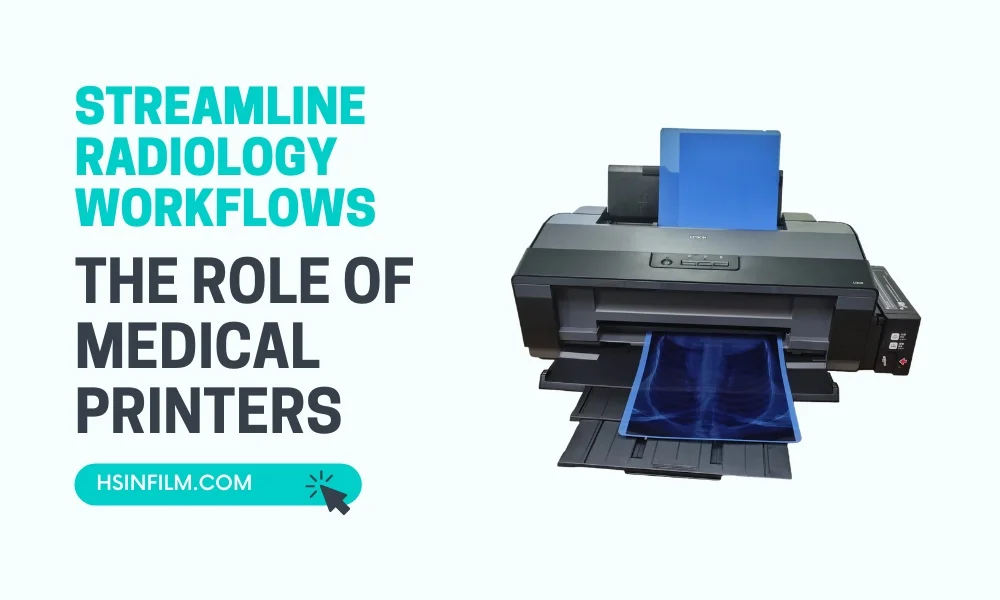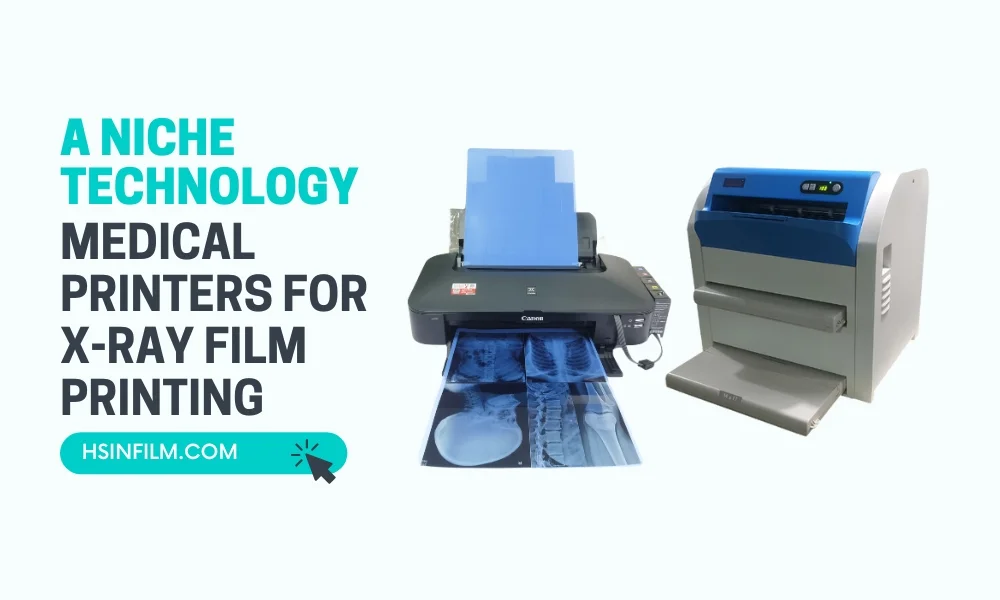As a medical professional, you understand the crucial role that X-ray films play in diagnosing and treating patients. These images provide valuable insights into a patient’s condition, guiding medical decisions and ensuring accurate diagnoses. However, to maintain the quality and integrity of X-ray films, proper storage is essential. In this comprehensive guide, we will delve into the various aspects of how should X-ray film be stored for their clarity, protect patient data, and ensure the best possible patient care.
Table of Contents: How Should X-ray Film Be Stored
Importance of X-ray Films in Medical Imaging
X-ray films have been a cornerstone of medical imaging for decades, playing a critical role in diagnosing and monitoring a wide range of medical conditions. While digital imaging has gained popularity in recent years, X-ray films remain a trusted, reliable, and widely used tool in many healthcare settings. Their importance can be broken down into several key areas:
1. Reliable Diagnostic Tool
- High-Resolution Imaging: X-ray films offer excellent image resolution and detail, making them a reliable medium for identifying bone fractures, tumors, dental issues, and other abnormalities. The clarity of images on film allows healthcare professionals to make accurate diagnoses, especially in settings where digital imaging may not be available.
- Detailed Contrast: X-ray films produce high-contrast images, which are crucial in differentiating between tissues, bones, and other structures in the body. This contrast is essential for detecting subtle changes in anatomy that may indicate disease or injury.
2. Consistency and Durability
- Standardized Imaging: X-ray films have been used for decades, and their format is standardized across medical institutions. This consistency ensures that healthcare professionals globally can share, read, and interpret films without compatibility issues.
- Physical Durability: X-ray films are resistant to electronic malfunctions or data loss that may occur with digital imaging systems. They provide a durable, long-lasting record that is not subject to the risks associated with electronic data storage, such as file corruption or system crashes.
X-ray films remain an important part of medical imaging due to their reliability, accessibility, and cost-effectiveness. As medical technology continues to evolve, X-ray films maintain their place as a trusted tool, complementing digital advancements and ensuring that patient care remains consistent and comprehensive.
Check our high-quality and affordable X-ray Films
Understanding the Proper X-ray Film Storage Techniques
Proper storage of X-ray films is essential for preserving image quality, ensuring accurate diagnoses, and maintaining long-term medical records. Incorrect storage can lead to image degradation, rendering the films useless for diagnostic purposes. Below are key techniques and guidelines for properly storing X-ray films to maintain their integrity and prolong their lifespan.
1. Optimal Temperature Conditions
- Recommended Range: X-ray films should be stored at a temperature between 10°C and 21°C (50°F and 70°F). Exposing films to extreme temperatures can result in physical warping, emulsion damage, and premature aging of the film.
- Impact of High Temperatures: Prolonged exposure to heat can cause the film to soften and distort, which may affect image clarity and contrast. The emulsion layer (the photosensitive layer) may degrade, leading to fogging and loss of detail in the images.
- Impact of Low Temperatures: Extremely cold environments can make the film brittle, increasing the risk of cracking or physical damage during handling. If cold-stored films are not allowed to warm up to room temperature before use, condensation can form, leading to moisture damage.
2. Controlled Humidity Levels
- Ideal Humidity Range: Store X-ray films in a controlled environment with humidity levels between 30% and 50%. This range prevents moisture-related issues like sticking, swelling, or the formation of mold on the film surface.
- Impact of High Humidity: Excessive humidity can cause the films to stick together, making them difficult to separate without damaging the images. Humidity also promotes the growth of mold and mildew, which can permanently damage the film.
- Impact of Low Humidity: Very low humidity can lead to static electricity build-up, which may result in artifacts on the film. This can degrade image quality and potentially interfere with accurate diagnosis.
3. Protection from Light Exposure
- Dark Storage: X-ray films are sensitive to light, particularly UV light, which can cause them to become fogged and unusable. Always store films in a dark environment, such as light-tight cabinets, to prevent accidental exposure.
- Use of Proper Containers: Ensure that films are stored in opaque, light-proof containers or envelopes that block out all sources of light, even during short periods of storage. This is particularly important for unexposed or partially exposed films.
4. Radiation Protection
- Avoid Background Radiation: X-ray films should be stored in lead-lined cabinets or specially designed containers that protect them from background radiation. This is essential as even low-level radiation exposure over time can cause fogging, which reduces image contrast and diagnostic quality.
- Distance from Radiation Sources: Films should be stored away from areas where radiation-producing equipment (like X-ray machines or CT scanners) is in use to minimize the risk of inadvertent exposure.
Proper storage techniques for X-ray films are essential for preserving their quality and ensuring that they remain a reliable diagnostic tool over time. By maintaining optimal temperature, humidity, light, and radiation conditions, and by using organized filing and protective methods, healthcare professionals can avoid common issues like image degradation, artifacts, and loss of diagnostic information.
Impact of Incorrect Storage on X-ray Film Quality and Patient Care
Incorrect storage of X-ray film can significantly impact its quality, leading to several issues that compromise its diagnostic value. Here are the primary effects:
1. Image Degradation
- Heat Exposure: X-ray films are highly sensitive to temperature. If stored in environments that are too hot, the film’s emulsion layer can become damaged, causing the image to appear faded or blurry. High temperatures can lead to chemical reactions that degrade the silver halide crystals in the film, resulting in poor contrast and overall deterioration.
- Humidity: High humidity can cause the film to become sticky or tacky, leading to damage when the films stick together. Low humidity, on the other hand, can make the film brittle and more susceptible to cracking. Ideal storage conditions typically require a controlled environment with a relative humidity of 30-50% to preserve film integrity.
2. Artifacts
- Light Exposure: X-ray film is sensitive to light, especially before it has been processed. Exposure to light can result in “fogging,” where the film appears to have a cloudy or grayish tone, reducing the clarity of the image. This fogging can obscure important diagnostic details.
- Dust and Contaminants: Improperly sealed or dusty storage environments can cause particles to settle on the film, leading to unwanted artifacts on the final image. Dust particles can appear as dark spots or streaks, which can be confused with pathological findings, complicating diagnosis.
3. Loss of Diagnostic Information
- Chemical Fading: X-ray films stored in areas where they are exposed to chemical fumes, such as from cleaning agents or gases, may experience chemical fading. This fading reduces the contrast and detail of the image, making it difficult for radiologists or dentists to identify fine anatomical structures or abnormalities.
- Mechanical Damage: Films stored in tightly packed or poorly organized conditions can suffer from physical damage like creases, folds, or scratches. These physical defects lead to missing or distorted information, which can result in inaccurate readings or the need for re-imaging.
4. Increased Radiation Sensitivity
- Radiation Exposure: X-ray film is sensitive to radiation, even when not being actively used. If stored near radiation sources (e.g., in radiology departments without proper shielding), the film can be exposed to low levels of background radiation, leading to a cumulative effect known as “film fogging.” This reduces contrast and detail, making the film less useful for diagnostic purposes.
5. Static Electricity
- Electrostatic Discharge: In areas with very low humidity or improper handling practices, static electricity can build up and discharge onto the film. This can cause bright white streaks or spots, resembling lighting patterns, which interfere with image clarity. Handling film with bare hands, especially in dry conditions, can increase this risk.
6. Long-Term Storage Concerns
- Aging: Even under ideal conditions, X-ray films have a limited shelf life. Over time, the film will naturally degrade, leading to a loss of sensitivity and image quality. However, improper storage accelerates this process, causing films to expire prematurely, leading to faded images and reduced diagnostic accuracy.
- Emulsion Layer Damage: The emulsion layer on X-ray film is particularly sensitive to environmental changes. If not stored in a temperature-controlled environment, the emulsion may crack, peel, or become distorted, further degrading image quality and rendering the film unusable.
How to Minimize Storage-Related Issues
To ensure X-ray films remain in optimal condition, proper storage protocols should be followed:
- Temperature Control: Store films in a cool, stable environment (10-21°C or 50-70°F). Avoid placing films near heat sources or in direct sunlight.
- Humidity Control: Maintain relative humidity between 30-50% to prevent issues like warping, stickiness, or brittleness.
- Light Protection: Store films in dark containers or cabinets to avoid unnecessary exposure to light.
- Organized Shelving: Store films in an organized, well-spaced manner to avoid physical damage, ensuring they aren’t crammed or stacked too tightly.
- Radiation Shielding: Keep films away from sources of radiation, using proper lead-lined storage cabinets if necessary.
By adhering to these storage guidelines, you can prevent image degradation, artifacts, and the loss of vital diagnostic information, ensuring high-quality X-ray films for accurate diagnoses.
Factors Affecting X-ray Film Storage
The long-term storage of X-ray films can lead to several detrimental effects that reduce the film’s quality and its diagnostic utility. These effects include fading, discoloration, and overall deterioration. Here’s an exploration of how these long-term storage issues manifest and the underlying causes:
1. Fading
- Chemical Instability: Over time, X-ray films are prone to fading due to the breakdown of their silver halide crystals. These crystals are essential for capturing the latent image during X-ray exposure, but they can degrade when exposed to environmental factors like heat, humidity, and light over an extended period. As a result, the film’s contrast diminishes, and finer details may become less visible.
- Latent Image Fading: In films that have been exposed but not yet processed, the latent image can fade over time if not developed promptly. This is particularly important in long-term storage, where films awaiting processing might lose sensitivity and produce suboptimal images once developed.
2. Discoloration
- Oxidation: Exposure to oxygen, especially when stored in environments with fluctuating air quality or exposure to chemical fumes, can lead to oxidation of the film’s emulsion. This can cause discoloration, such as yellowing or browning, especially along the edges of the film. Discolored films often suffer from a loss of contrast and clarity, making diagnosis more challenging.
- Light Exposure: X-ray film is sensitive to light, even after being processed. Long-term exposure to light—whether from indirect sunlight, fluorescent lighting, or other sources—can cause the film to take on a foggy or cloudy appearance. This light-induced fogging results in a loss of image sharpness, and the film may develop a grayish hue that reduces its diagnostic value.
3. Deterioration of the Emulsion Layer
- Emulsion Cracking and Peeling: The emulsion layer of X-ray film, which contains the light-sensitive materials, can become brittle over time. Improper storage conditions, such as excessive dryness or exposure to heat, can cause the emulsion to crack or peel. This damages the image and can render the film unusable, as portions of the diagnostic information may be lost.
- Emulsion Softening: On the other hand, high humidity can cause the emulsion layer to soften or become sticky. This can lead to films sticking together when stacked or stored improperly, causing irreparable damage when they are separated.
4. Fogging
- Background Radiation Exposure: X-ray films are sensitive to even low levels of radiation. Over time, films stored near radiation sources, such as in hospitals or dental offices with active X-ray equipment, can accumulate low doses of radiation. This results in fogging, where the film appears slightly gray or hazy. Fogging reduces the contrast of the image, making it harder to differentiate between tissues and structures in the film.
- Chemical Exposure: Long-term exposure to chemicals, such as cleaning agents or volatile compounds, can also contribute to film fogging. The chemicals interact with the film’s emulsion, leading to a foggy appearance that compromises the film’s diagnostic quality.
5. Loss of Sensitivity
- Aging: X-ray film naturally loses sensitivity over time, even when stored under ideal conditions. This means that older films may require longer exposure times to produce clear images, increasing the risk of overexposure to both the patient and the film. With reduced sensitivity, the film’s ability to accurately capture detailed diagnostic information declines.
- Silver Halide Breakdown: The silver halide crystals in the emulsion are responsible for creating the image when exposed to X-rays. Over long periods, these crystals can break down or become less reactive, reducing the film’s capacity to produce high-quality images.
6. Artifact Formation
- Environmental Contaminants: Dust, dirt, and other environmental contaminants can accumulate on stored films, especially if they are not properly sealed or stored in clean environments. These contaminants appear as artifacts on the film, which can obscure important diagnostic details. Additionally, if the film is handled frequently or improperly during long-term storage, fingerprints and smudges can become permanent, creating further artifacts.
- Static Discharge: In dry environments, static electricity can build up on the surface of the film, creating bright white streaks or spots on the image. Over time, repeated handling in low-humidity conditions can increase the likelihood of static discharge artifacts.
7. Physical Damage
- Curling and Warping: Improper storage conditions, particularly when films are exposed to fluctuating temperatures and humidity, can cause physical deformation such as curling or warping. This deformation not only affects the film’s usability in X-ray readers but also distorts the image, making it difficult to interpret.
- Tears and Scratches: Over time, films stored in tightly packed or improper conditions may become physically damaged. Scratches, tears, or creases can develop, especially if the film is mishandled during retrieval or filing. These physical defects can lead to missing diagnostic information or require re-imaging.
8. Long-Term Storage Best Practices
To prevent these long-term effects, it is essential to follow best practices for storing X-ray film:
- Controlled Temperature and Humidity: Store films in a temperature-controlled environment (typically 10-21°C or 50-70°F) with relative humidity levels between 30-50%. Avoid fluctuations in temperature and humidity to prevent film deterioration.
- Avoid Light and Radiation Exposure: Films should be stored in dark, light-proof containers to prevent exposure to light. Lead-lined cabinets are recommended for storing films in environments where they may be exposed to background radiation.
- Proper Handling and Filing: Films should be stored flat or in hanging file systems that prevent them from curling or warping. Handle films with care, using gloves to prevent fingerprints, and ensure they are not bent, scratched, or torn during retrieval or filing.
- Use of Digital Archives: For long-term storage, consider digitizing X-ray films. Digital archives eliminate the risk of physical deterioration and offer a more permanent solution for maintaining diagnostic information.
To maintain film quality and ensure that diagnostic information remains intact over time, it’s crucial to store X-ray films under ideal conditions, handle them properly, and consider transitioning to digital storage solutions where possible.
Suitable Storage Environment
To ensure the long-term preservation of X-ray films, specific storage conditions related to temperature and humidity must be carefully controlled. Here’s a more detailed breakdown of the recommended storage conditions, tolerances, and the consequences of exceeding these limits:
1. Recommended Storage Temperature
- Ideal Range: X-ray films should be stored at a temperature between 10°C and 21°C (50°F to 70°F). This temperature range helps maintain the integrity of the film’s emulsion layer and prevents the chemical degradation of the silver halide crystals, which are responsible for capturing the image.
- Tolerances: Small fluctuations of about ±2°C are generally acceptable, but significant or prolonged deviations from the recommended range can accelerate film deterioration.
- Consequences of Exceeding Limits:
- High Temperatures (>21°C or 70°F): Exposure to high temperatures can cause the emulsion layer to soften, leading to image degradation, such as fading or blurring. The higher the temperature, the more likely the chemicals in the film will react prematurely, reducing the film’s contrast and detail. Extended exposure to heat may cause the film to become sticky, making it more susceptible to physical damage.
- Low Temperatures (<10°C or 50°F): Storing films at very low temperatures can make the emulsion layer brittle, increasing the risk of cracking, peeling, or breaking when handled. While temporary cold storage is sometimes used to preserve film, it should be done with caution, as sudden changes in temperature during retrieval can cause condensation, further damaging the film.
2. Recommended Humidity Levels
- Ideal Range: The optimal humidity range for storing X-ray films is 30% to 50% relative humidity (RH). This range strikes a balance between preventing moisture buildup (which can damage the film) and avoiding overly dry conditions (which can cause the film to become brittle).
- Tolerances: Minor fluctuations of about ±5% RH are generally acceptable. However, sustained deviations outside this range can have detrimental effects on the film’s quality.
- Consequences of Exceeding Limits:
- High Humidity (>50% RH): Excessive humidity can cause the film to absorb moisture, leading to softening of the emulsion layer. This makes the film sticky and more prone to physical damage, such as when films stick together and tear apart during retrieval. High humidity can also encourage mold growth, which causes irreversible damage to both the film’s emulsion and the plastic base. Additionally, moisture can cause the formation of condensation on the film, leading to water stains or fogging of the image.
- Low Humidity (<30% RH): Storing films in overly dry environments can cause the emulsion layer to dry out and become brittle, making the film more vulnerable to cracking, peeling, or tearing. Low humidity can also increase the likelihood of static electricity buildup, which can cause artifacts like bright white streaks or spots on the film.
3. Combined Effects of Temperature and Humidity
The interaction between temperature and humidity is critical. For example:
- High Temperature + High Humidity: This combination accelerates the breakdown of the film’s emulsion layer, leading to softening, warping, or the growth of mold. In extreme cases, the film can degrade to the point of becoming unusable.
- High Temperature + Low Humidity: When films are stored in hot, dry conditions, they can become brittle, and the risk of cracking or peeling increases. Additionally, these conditions can cause the film to curl or warp, making it difficult to use in X-ray viewing equipment.
- Low Temperature + High Humidity: Cold, humid conditions can lead to condensation forming on the film, particularly when films are removed from storage and exposed to warmer environments. Condensation can result in water spots and fogging, significantly reducing image quality.
4. Consequences of Fluctuating Temperature and Humidity
Even if the average temperature and humidity are within acceptable ranges, rapid fluctuations between extremes can cause significant problems:
- Film Expansion and Contraction: X-ray film can expand or contract in response to changing temperature and humidity. This can cause warping or distortions in the film, making it difficult to fit into viewing or scanning equipment. The resulting physical distortions can also interfere with the diagnostic accuracy of the image.
- Condensation Risk: If films are moved between environments with very different temperatures or humidity levels, condensation may form on the film’s surface. Condensation can cause water spots or streaks, permanently damaging the image quality.
5. Best Practices for Storage
To avoid these issues, it’s important to follow these best practices:
- Consistent Temperature and Humidity: Ensure that the storage environment has stable, controlled conditions with minimal fluctuation in temperature and humidity. Ideally, the environment should be monitored using climate control systems to maintain consistent levels.
- Proper Ventilation: Good ventilation in the storage area can help regulate humidity levels, preventing the buildup of moisture and reducing the risk of mold or mildew growth.
- Avoid Exposure to Direct Heat Sources: Keep X-ray films away from direct sources of heat, such as radiators, vents, or windows that receive direct sunlight. Prolonged exposure to heat accelerates chemical reactions in the film and shortens its shelf life.
- Storage Cabinets: Use lead-lined or light-tight storage cabinets to protect films from light exposure and radiation. This minimizes the risk of fogging and extends the life of the film.
By adhering to these recommended storage guidelines, healthcare professionals and facilities can significantly extend the shelf life of X-ray films and maintain high-quality imaging for diagnostic purposes.
Examples of Common Storage Errors and Their Consequences
Proper storage of X-ray films is essential to maintain their quality and diagnostic value. However, common storage errors can lead to a range of issues, from image degradation to the complete unusability of the films. Below are examples of common storage errors, along with their potential consequences, to highlight the importance of adhering to recommended storage practices:
1. Storing Films in High Temperatures
- Error: Storing X-ray films in areas that are too warm, such as near radiators, heaters, or in rooms with poor ventilation.
- Consequences: Exposure to high temperatures can soften the emulsion layer, causing images to fade or blur. Films may become sticky, leading to physical damage when handled. Over time, high temperatures accelerate chemical degradation, reducing contrast and detail in the images. This can make it difficult to diagnose conditions accurately, forcing re-imaging and unnecessary radiation exposure for patients.
2. High Humidity Storage
- Error: Storing X-ray films in environments with excessive humidity, such as basements or areas without dehumidification systems.
- Consequences: High humidity causes the emulsion layer to absorb moisture, softening the film and making it sticky. Films may stick together or to their storage sleeves, leading to tears or creases when separated. Mold growth can occur in extremely humid conditions, permanently damaging the film’s emulsion and making the images unreadable. This leads to costly re-imaging and compromises patient care.
3. Exposing Films to Light
- Error: Storing X-ray films in areas where they are exposed to light, such as rooms with windows, fluorescent lighting, or insufficiently sealed storage cabinets.
- Consequences: X-ray films are light-sensitive, and prolonged exposure to light causes fogging, which manifests as a gray or cloudy appearance on the film. This reduces contrast and sharpness, making it harder to distinguish fine details necessary for accurate diagnosis. Light-induced fogging often results in the need for re-imaging, adding to operational costs and patient inconvenience.
4. Improper Filing Systems
- Error: Stacking films in piles, bending them, or storing them in cramped conditions without proper support, such as flat or hanging file systems.
- Consequences: Improper filing systems can lead to warping or curling of the films, making them difficult to use in X-ray viewers or digitizers. Bent or creased films create physical distortions in the image, which can obscure diagnostic information. This physical damage often results in image rejections and the need for repeat X-rays.
5. Fluctuating Temperature and Humidity
- Error: Storing X-ray films in environments where temperature and humidity fluctuate frequently, such as unregulated rooms or areas with poor climate control.
- Consequences: Frequent changes in temperature and humidity cause the film to expand and contract, leading to warping, curling, and cracks in the emulsion layer. Condensation may form during temperature shifts, causing water spots, streaks, and fogging. These effects degrade the film quality, reducing its usefulness in diagnosis and often necessitating re-imaging.
6. Exposure to Radiation Sources
- Error: Storing X-ray films in areas near active radiation sources, such as X-ray rooms, or in unshielded storage cabinets.
- Consequences: Even low-level background radiation can cause fogging in stored X-ray films over time. This radiation fogging results in a grayish appearance that reduces image contrast and sharpness. Storing films in lead-lined cabinets or rooms away from active radiation sources can help prevent this, but failure to do so may result in unusable images and costly re-imaging.
7. Incorrect Humidity Levels in Dry Environments
- Error: Storing X-ray films in overly dry environments, such as rooms with excessive air conditioning or near dehumidifiers without proper control.
- Consequences: Low humidity levels cause the emulsion layer to become brittle, increasing the risk of cracking, peeling, or scratching when the film is handled. Static electricity may also build up on the film, leading to artifacts (bright streaks or spots) that interfere with image clarity. Such damage often requires new X-rays to be taken.
8. Not Using Lead-Lined Cabinets for Long-Term Storage
- Error: Storing films in unshielded cabinets or exposed shelving for long periods, especially in environments where radiation equipment is regularly in use.
- Consequences: Over time, background radiation can slowly fog X-ray films, causing a general loss of contrast and diagnostic clarity. Lead-lined cabinets help block radiation exposure, but failure to use them in high-radiation environments increases the risk of fogging and reduces the lifespan of the stored films.
9. Inadequate Ventilation
- Error: Storing X-ray films in confined, poorly ventilated spaces, such as small storage rooms or cabinets without airflow.
- Consequences: Lack of proper ventilation can cause humidity to rise, especially in storage spaces where temperature control is also poor. High humidity leads to mold growth, softening of the emulsion, and the risk of films sticking together. These conditions make the films unusable over time and increase operational costs due to re-imaging.
10. Storing Films Without Protective Sleeves
- Error: Storing films directly on shelves or in storage boxes without protective envelopes or sleeves.
- Consequences: Without protective sleeves, films are more prone to scratches, dust, dirt, and fingerprints, all of which can create artifacts on the image. These artifacts can obscure critical diagnostic information, making it necessary to take new X-rays to achieve a clear diagnosis.
By adhering to proper storage practices—including maintaining stable temperature and humidity, using lead-lined cabinets, avoiding light and radiation exposure, and utilizing proper filing systems—dental and medical facilities can preserve X-ray films in optimal condition for long-term use.
Proper Packaging and Labeling

X-ray films are essential diagnostic tools that require careful handling, secure packaging, and accurate labeling to prevent mishandling and misplacement. Ensuring that these films are properly packaged and labeled can help maintain their integrity, protect sensitive patient data, and streamline workflow in healthcare settings. Here’s a detailed guide on the importance of secure packaging and accurate labeling for X-ray films:
1. Importance of Secure Packaging
Proper packaging is crucial to protect X-ray films from physical damage, environmental hazards, and accidental exposure. A few key points to consider when packaging X-ray films include:
a. Protection from Physical Damage
- Prevention of Bending and Scratching: Films can be easily bent, scratched, or creased, which affects their readability. Secure packaging prevents direct contact with hard surfaces or sharp objects that could damage the emulsion layer.
- Rigid Packaging Materials: Use sturdy, rigid materials like hard plastic or cardboard to package X-ray films. These materials provide additional protection from accidental drops, impacts, or crushing during handling and transportation.
- Padding for Extra Protection: Including protective padding such as foam inserts or bubble wrap can further shield the films from any jolts or vibrations during transit.
b. Protection from Environmental Hazards
- Light Protection: X-ray films are sensitive to light, especially UV rays, which can cause fogging and damage. Ensure that films are packaged in opaque, light-tight envelopes or boxes to prevent exposure to light, especially during transport.
- Moisture and Humidity Protection: Packaging should be moisture-resistant to protect against humidity and spills. Sealable plastic pouches or bags can safeguard films from moisture exposure, which could lead to film sticking, warping, or mold growth.
c. Protection from Radiation Exposure
- Radiation Shielding: To avoid unintentional exposure to background radiation, package X-ray films in lead-lined containers or bags. This is particularly important when transporting films through areas with radiation-producing equipment.
2. Importance of Accurate Labeling
Accurate and clear labeling of X-ray films is essential to avoid misplacement, ensure patient confidentiality, and promote organized workflow. Proper labeling techniques reduce the risk of errors and allow healthcare professionals to quickly identify and retrieve specific films. Here are the critical elements of accurate labeling:
a. Patient Identification
- Full Patient Name and Identification Number: Each X-ray film must be clearly labeled with the patient’s full name, identification number, and other relevant information such as date of birth. This ensures that the film is correctly associated with the patient’s medical record.
- Scan Date: Always include the date the X-ray was taken. This is crucial for tracking patient progress and comparing films over time for changes in condition.
b. Medical Information
- Type of Scan and Anatomical Area: Indicate the type of X-ray (e.g., chest, dental, limb) and the anatomical area being imaged. This helps healthcare providers immediately understand the purpose of the film and match it to the patient’s clinical needs.
- Indications for Scan: In some cases, it may be useful to include a brief note regarding the reason for the X-ray (e.g., trauma, infection) to assist in clinical review and interpretation.
c. Film Handling Instructions
- Special Handling Labels: Add labels with special instructions, such as “Fragile,” “Handle with Care,” or “Keep Dry,” to alert staff and couriers about the need for careful handling. This can prevent mishandling or improper storage during transit or while films are in storage.
- Date for Review or Destruction: For facilities that have retention policies, labels should also include a destruction or review date to ensure compliance with medical record-keeping regulations.
d. Confidentiality and Compliance
- HIPAA Compliance: Labeling must ensure that patient confidentiality is protected in compliance with regulations like HIPAA (Health Insurance Portability and Accountability Act). Avoid placing sensitive patient information in visible areas on external packaging. Instead, use internal labeling within secure packaging.
- Barcoding for Digital Integration: Many healthcare facilities integrate barcode or QR code labeling to streamline the filing and retrieval process. This technology allows for easier tracking, reduces human error, and ensures accurate patient-film matching in both physical and digital systems.
3. Preventing Mishandling and Misplacement
Secure packaging and accurate labeling play a key role in reducing mishandling and preventing films from being lost or misplaced. Here’s how they contribute to a smoother workflow:
a. Minimizing Handling Errors
- Consistent Labeling System: Using a standardized, consistent labeling system across departments helps reduce errors in film handling. Clear identification allows technicians and medical staff to quickly identify the correct film, minimizing the risk of confusion or misplacement.
- Packaging for Transport: Securely packaged films reduce the risk of being mishandled during transport within or between medical facilities. They are less likely to be damaged or lost when placed in properly labeled, protective containers.
b. Efficient Film Organization
- Categorized Labeling: Organizing X-ray films by department, scan type, or patient category (e.g., pediatrics, orthopedics) and including this information on the labels can streamline workflow. It enables quicker film retrieval and ensures films are filed in the correct location.
- Trackable Storage Systems: Facilities with digital tracking systems benefit from labeling that includes barcodes, as it allows films to be tracked electronically, further minimizing the risk of misplacement or loss.
c. Enhanced Communication
- Clear Handling Instructions: Accurate labeling with specific handling instructions (e.g., “Do Not Bend” or “Urgent”) ensures that everyone involved in handling the film is aware of how to treat it, thereby reducing the chance of damage or delays.
Together, these practices minimize the risk of mishandling and misplacement, preserving the quality of X-ray films and maintaining compliance with regulatory requirements. For healthcare providers, adopting these practices results in smoother operations and improved patient care.
Protection from Physical Damage
X-ray films are delicate and highly sensitive to physical forces, which can easily compromise their quality and render them unusable for diagnostic purposes. To preserve their integrity, it’s essential to adopt proper handling, storage, and packaging techniques. Below are key strategies to protect X-ray films from physical damage:
1. Handling X-ray Films with Care
a. Wear Gloves
- Prevention of Fingerprints: Always wear clean, lint-free gloves when handling X-ray films. Oils and dirt from your fingers can leave smudges and marks on the film, which may obscure critical diagnostic information.
- Avoiding Static Build-Up: Gloves also help reduce the risk of static electricity, which can cause artifacts or distortions on the film, degrading the image quality.
b. Handle by the Edges
- Minimize Contact with the Image Area: X-ray films should always be handled by the edges to avoid direct contact with the emulsion layer (the sensitive surface of the film). Touching the film’s surface can lead to scratches, fingerprints, or pressure marks, all of which can distort the image.
- Avoid Creasing: By holding the edges, you reduce the risk of bending or creasing the film, which can cause permanent physical damage that compromises image accuracy.
c. Use Both Hands for Large Films
- Support Larger Films: For larger X-ray films, use both hands to provide adequate support. This prevents the film from bending under its own weight, which could lead to warping or breakage.
2. Proper Storage Techniques
a. Use Rigid, Protective Envelopes
- Sturdy Envelopes: Store X-ray films in rigid, archival-quality envelopes made from acid-free materials. This provides a barrier against dust, dirt, and other contaminants while preventing films from bending or folding.
- Avoid Overcrowding: Do not overcrowd the envelopes. Overstuffing can put pressure on the films, leading to creases or cracks, especially if they are stacked horizontally.
b. Vertical Storage
- Preferred Position: Store X-ray films in a vertical, upright position. This helps avoid the pressure that can occur when films are stacked horizontally, which can lead to deformation, particularly over long periods of time.
- Use of Dividers: When storing multiple films in a vertical rack, use dividers to ensure they do not rub against each other, reducing the risk of scratches.
c. Storage Cabinets
- Metal Cabinets: Store films in metal storage cabinets that provide physical protection against environmental factors, such as dust and pests. These cabinets are also sturdy enough to protect films from being crushed or bent.
- Avoid Floor-Level Storage: Keep X-ray films off the floor to protect them from accidental impacts, spills, and flooding. Elevated shelves or cabinets provide a safer environment.
3. Transporting X-ray Films
a. Use Hard-Shell Containers
- Rigid Cases for Transport: When transporting X-ray films between locations, use hard-shell, impact-resistant containers. These containers protect films from external physical forces, such as impacts or drops, during transport.
- Cushioned Interiors: Ensure the interior of the containers is padded with foam or similar materials to minimize the risk of the films shifting during transit, which could result in bending or damage.
b. Labeling for Fragility
- Clear Instructions: Label the containers with “Fragile” or “Handle with Care” to alert personnel and couriers to the delicate nature of the contents. This reduces the chances of rough handling, which could result in physical damage to the films.
By following best practices, such as handling films by their edges, using rigid storage materials, maintaining optimal environmental conditions, and taking precautions against static electricity, healthcare professionals can ensure that X-ray films remain intact and maintain their diagnostic value.
Protection from Light Exposure
X-ray films are highly sensitive to light, particularly to ultraviolet (UV) and visible light, which can cause fogging, reduce image clarity, and render the film unusable for diagnostic purposes. Proper precautions must be taken to shield X-ray films from unnecessary exposure to light, especially before and during their development process. Here are key strategies to protect X-ray films from light exposure:
1. Using Light-Tight Packaging
a. Opaque, Light-Proof Envelopes
- Protection from Ambient Light: X-ray films should always be stored in light-proof, opaque envelopes or containers to prevent accidental exposure to light. These envelopes are specifically designed to block out any light, including both UV and visible light, ensuring the films are not fogged before use.
- Materials Used: Common materials for light-proof packaging include black paper, cardboard, or plastic that does not allow any light penetration. Ensuring the package is completely sealed is essential for protection.
b. Light-Tight Containers for Storage
- Sealed Storage Boxes: When storing X-ray films in larger quantities, use light-tight, sealed containers or cabinets that block out ambient light from the storage room. This ensures the films remain protected until they are ready for use or processing.
- Quick Access: Design the storage system so that films can be retrieved and returned to their protective packaging with minimal light exposure. Quick access containers or drawers are ideal in darkroom environments.
2. Minimizing Exposure in Darkroom Environments
a. Using a Safe Light
- Red or Amber Safe Lights: Darkrooms where X-ray films are handled or processed are equipped with safe lights, typically red or amber lights that emit wavelengths of light that are less harmful to the sensitive emulsion layer of the X-ray film. These safe lights allow healthcare professionals to work in dimly lit environments without exposing the film to harmful visible light.
- Correct Intensity and Distance: Safe lights should be positioned at an appropriate distance from the film processing area, and their intensity should be regulated to ensure that they do not inadvertently fog the films over time.
b. Handling Films Quickly
- Minimize Time in Light: When handling X-ray films in any environment that is not fully protected from light (even in darkroom-safe lighting), the time that the film is exposed to ambient light should be minimized. Quickly moving the film into or out of its protective packaging reduces the risk of accidental exposure.
- Cover Films When Not in Use: If X-ray films need to be momentarily set aside in a darkroom, they should be covered with an opaque material or placed in a light-proof envelope to avoid unnecessary exposure.
3. Avoiding Exposure During Transport
a. Transport in Light-Proof Containers
- Opaque Transport Cases: When X-ray films need to be transported between departments or facilities, they should be securely packed in light-proof containers. This ensures that no light can penetrate and damage the film during transit, especially when films are being transported through well-lit areas.
- Avoid Transparent Bags: Always avoid using transparent or semi-transparent bags, as even brief exposure to light can degrade the film’s quality. Lightproof transport options are crucial when moving films from one place to another.
b. Protect During Outdoor Transport
- Shield from Sunlight: If X-ray films are transported outdoors, where they may be exposed to sunlight, extra precautions should be taken to ensure they are not exposed to direct sunlight. Sunlight, especially UV radiation, is particularly damaging to X-ray films and can cause rapid fogging.
- Double Layer Protection: Use multiple layers of protective packaging (e.g., an opaque envelope inside a sealed box) when transporting films outside of controlled environments to ensure maximum light protection.
4. Protecting Unexposed Films
a. Store in a Dark, Controlled Environment
- Avoid Direct Light Exposure: Even before they are used, unexposed X-ray films must be stored in a dark, cool environment where they are not exposed to light. Exposure to any light, even briefly, can cause pre-exposure fogging, which will affect the film’s diagnostic quality once it is developed.
- Keep in Original Packaging: Films should be kept in their original packaging until ready for use. Manufacturers often use light-tight, sealed containers that are specifically designed to protect the film from light until it is needed.
b. Avoid Film Expiration
- Follow Expiration Dates: Expired films may become more susceptible to light fogging over time, even if they are stored in a light-proof environment. Always check the expiration date on film packages and avoid using films that are past their shelf life for accurate diagnostic purposes.
5. Preventing Accidental Light Exposure During Film Processing
a. Maintain a Strict Darkroom Protocol
- Total Darkness for Certain Steps: Some steps of the X-ray film development process require total darkness, such as when loading the film into the processor. During these phases, no safe light or other source of light should be present.
- Ensure Light-Sealed Processing Equipment: Processing equipment, such as film processors and cassette loading devices, should be properly sealed to prevent any light leaks during the development process.
b. Using Automated Film Processing
- Automatic Film Loaders: Modern automated film processors are designed to load and process films in total darkness within a sealed environment. These machines minimize the risk of light exposure during film development, ensuring that the X-ray images maintain their quality.
Proper storage in light-tight containers, quick handling in controlled lighting environments, and careful transport practices ensure that X-ray films remain unaffected by ambient or direct light. By taking these precautions, healthcare professionals can safeguard the clarity and accuracy of X-ray films, which are critical tools in medical diagnosis.
Practical Tips on Organizing X-ray Films Efficiently and Effectively
Organizing X-ray films efficiently and effectively is crucial for maintaining film quality, ensuring quick retrieval, and optimizing space. Below are practical tips to help you establish a well-organized system:
1. Use Proper Filing Cabinets
- Lead-Lined Cabinets: Store X-ray films in lead-lined cabinets to protect them from background radiation exposure, which can cause fogging and degrade the image quality over time.
- Flat or Vertical Storage: Use flat or vertical filing cabinets specifically designed for X-ray films. These cabinets support films properly, preventing warping, curling, or bending.
- Space Allocation: Choose cabinets that are the appropriate size for your film collection, allowing for growth without overfilling, which can lead to physical damage.
2. Label and Categorize Films
- Clear Labeling: Use a consistent labeling system that includes patient name, ID number, date, and type of X-ray (e.g., dental, chest, etc.). Labels should be easily visible for quick identification.
- Alphabetical or Numerical Organization: Organize films alphabetically by patient name or numerically by patient ID number. This helps with quick retrieval when searching through large volumes of films.
- Color-Coding: Implement a color-coding system for different categories of films, such as by body part (e.g., red for dental, blue for chest) or by year. This makes it easier to locate films at a glance.
3. Store Films in Protective Sleeves
- Use Archival-Quality Sleeves: Place each X-ray film in an archival-quality, acid-free sleeve to protect it from dust, fingerprints, and scratches. These sleeves prevent physical damage and extend the film’s shelf life.
- Label Sleeves: Ensure that each protective sleeve is labeled with the corresponding information (patient ID, date, and X-ray type) to streamline the filing process.
4. Establish a Chronological Filing System
- Date-Based Storage: Organize films by the date of the X-ray. You can have yearly, monthly, or even weekly sections depending on the volume of films. This allows for easy identification of older films that may need to be archived or destroyed (if no longer needed).
- Patient History Files: For recurring patients, maintain a chronological file for each, with older X-rays stored behind more recent ones. This ensures a complete diagnostic history is easily accessible.
5. Implement a Digital Index or Database
- Digital Log of Physical Films: Use a digital database to keep track of where each physical film is stored. Include patient details, date, X-ray type, and the cabinet location. This simplifies searching and reduces the time spent looking for a specific film.
- Searchable Fields: Set up searchable fields within the database, such as patient name, X-ray type, or date. This enables quick cross-referencing when a film is needed.
6. Implement FIFO (First In, First Out) Method
- Rotate Stock: Store newly created X-ray films at the back and move older films forward. This ensures that films that are more likely to be needed for follow-up or review are accessible first. It also helps identify older films for destruction or archiving.
- Remove Obsolete Films: Regularly review your collection and remove films that are past their required storage period or are no longer relevant (e.g., post-treatment). Properly dispose of them to free up space.
7. Organize by Department or Procedure
- Department-Based Storage: If managing a large volume of films across different departments (e.g., dental, radiology, oncology), organize storage by department. This reduces clutter and speeds up retrieval.
- Procedure-Specific Organization: Within departments, group films based on the type of procedure or scan (e.g., CT, MRI, dental X-ray). This approach is especially useful when certain types of films are frequently accessed.
8. Maintain Climate-Controlled Storage
- Temperature and Humidity Control: Ensure that the storage area is climate-controlled, with temperatures between 10°C and 21°C (50°F and 70°F) and humidity between 30% and 50%. This prevents film deterioration due to excessive heat, cold, or moisture.
- Monitor Conditions: Install temperature and humidity sensors to regularly monitor the storage environment. Proper climate control ensures that films maintain their quality over time.
9. Ensure Easy Access and Safety
- Organize for Quick Retrieval: Place frequently accessed films at eye level or in easily accessible cabinets. Less frequently used films can be stored in higher or lower drawers.
- Limit Access: Store films in a secure area with limited access to authorized personnel only. This prevents misplacement or accidental damage by unauthorized staff.
- Organize by Urgency: For medical offices with a high volume of films, it may be helpful to organize based on the urgency of access. For example, films for patients with ongoing treatments or follow-ups can be stored separately for faster access.
10. Establish a Regular Review and Audit Schedule
- Periodic Inventory Checks: Perform regular inventory checks to ensure that films are correctly filed, easily retrievable, and in good condition. This also helps catch any labeling or filing errors before they become a problem.
- Archiving Policy: Implement an archiving policy for older films that are no longer needed but must be kept for legal reasons. Store these in a designated area, and make sure they are properly labeled and tracked in the digital system.
- Destruction Protocol: For films that are past their retention period, ensure proper destruction protocols are followed (e.g., using certified disposal services to ensure confidentiality).
11. Organize for Digital Transition
- Prepare for Digital Storage: If you are transitioning from physical film storage to digital, organize films by priority for digitization. Start with the most recent or frequently used films.
- Digital and Physical Hybrid System: During the transition, ensure that physical films are still well-organized, and cross-reference them with digital files in the system. This ensures no loss of information during the process.
By using these organizational tips, you can create an efficient, accessible, and secure system for storing X-ray films. Effective film storage not only preserves the quality of diagnostic images but also improves workflow in busy medical or dental practices, ensuring that patient care remains the top priority.
Conclusion
Proper storage of X-ray films is not just about preserving physical media; it directly impacts patient care and diagnosis accuracy.
By maintaining the appropriate storage environment, implementing protective measures, and ensuring compliance with regulations, medical facilities can ensure the longevity and quality of X-ray films, contributing to better patient outcomes and improved healthcare services.
Remember, the care and attention you give to storing X-ray films can make a significant difference in the lives of your patients.




















